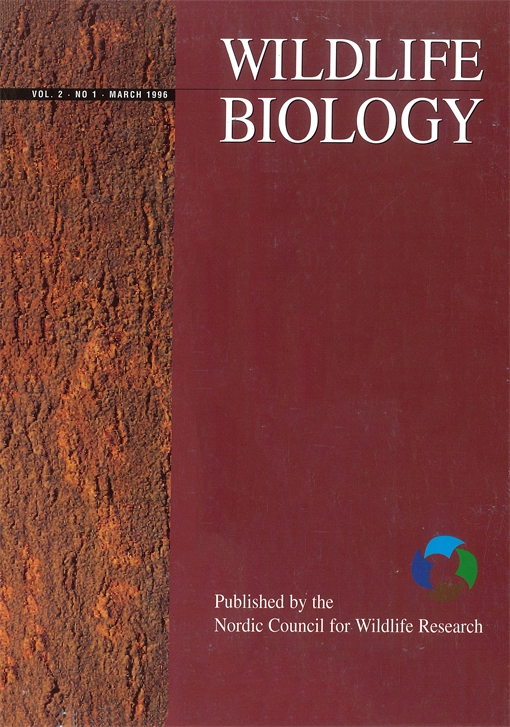Female body mass and reproduction from harvested moose Alces alces were compared in four populations of moose at different stages (densities) of population development, i.e. pre-peak, peak and post-peak, in Sweden during 1961–1991. In two (1 and 2) of the four populations, age-related body mass and reproduction was significantly lower in the post-peak (intermediate density) stage than in the pre-peak stage; whereas for the other two populations (3 and 4), no differences, or higher growth and reproduction at post-peak density, were found. In one population (2) data from all three stages (densities) of population development were available. Age-specific mean body mass was 12.8% lower, and fecundity 46.0% lower (average among age classes), during the peak density stage, than during the pre-peak stage, but did not differ significantly between the peak and post-peak stages, except for fecundity in 1.5-year-old females. In the two populations showing a negative density-dependent response (1 and 2), fecundity decreased more from pre-peak to post-peak density than could be predicted from the reduction in body mass. This suggested a lower reproductive investment per unit body mass at high and intermediate densities, compared to the low density stage. Similar to age-related body growth and fecundity, the proportion of lactating and/or calf-rearing females was significantly lower at post-peak population density in populations 1 and 2 compared to pre-peak densities, but only in the youngest reproducing age class (2.5 years). It is concluded that: i) the large increase in population density has resulted in density-dependent resource limitation, which is expressed as lowered body growth and reproduction in two of the four populations studied; ii) the lower reproductive investment per unit body mass at higher densities may constitute an adaptive strategy to maximise juvenile survival as conditions deteriorate; iii) density-dependent effects in moose may occur at densities which are lower than close to the ecological carrying capacity; and iiii) the variable density-dependent pattern among populations may be due to differential harvest regimes, causing variable post-peak densities, and thus different levels of resource competition among populations.
How to translate text using browser tools
1 December 1996
Density-dependent variation in reproduction and body mass in female moose Alces alces
Håkan Sand,
Roger Bergström,
Göran Cederlund,
Marina Östergren,
Finn Stålfelt

Wildlife Biology
Vol. 2 • No. 4
1996
Vol. 2 • No. 4
1996
Alces alces
body growth
carrying capacity
density-dependence
reproduction




